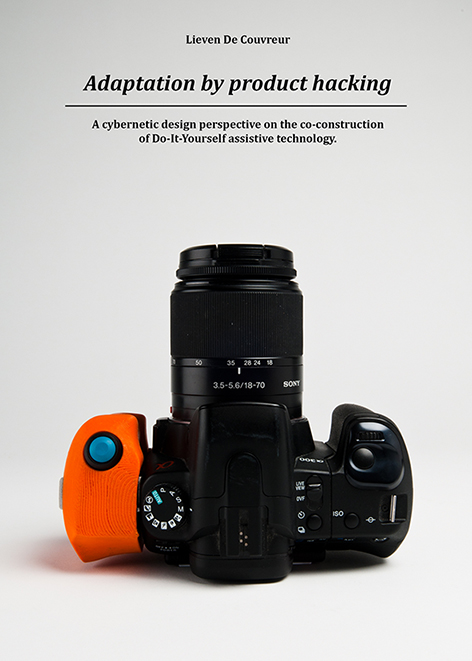Adaptation by product hacking
Whatever you may have heard about product hackers, the truth is they do something really, reallywell. In short: “hackers build things, crackers break them.” Through their experiential and socialapproach product hackers discover new possibilities in a frugal manner with the local resourcesand skills at hand. The human race has built up a rich history in adapting and designing his livingenvironment and surrounding artifacts. Although the phenomenon of product hacking has beenaround for a long time, it’s manifestation has drastically changed through several paradigm shiftswithin the DIY culture which lead to open-design. These shifts imply that professional designers areno longer placed above users when determining what is right or wrong for them. Within the contextof design for disability this perspective opens-up a complementary alternative to universal design.Today there are a lot of people with disabilities whose assistive devices have not yet come about,due to unique needs and challenges. A new generation of makers and occupational therapists areseizing this opportunity by producing one of a kind product adaptations in people’s homes, shelteredworkshops and rehabilitation centers.
This dissertation explores the role of professional designers within this new and open-ended context.In general the research focus is on the epistemic dynamics of hacking behavior within thepursuit of making a tailored product adaptation for a single user. Generally speaking collaborativehacking activities are a form of self-organizing co-design activities driven by participatory prototyping-interactions. For this reason, the starting point of this thesis was the question : “How do specificprototyping-interactions influence general adaptation within participatory hacking behavior?” Toanswer this question we propose a framework which illustrates hacking entities as a self-regulatingsystems. A cybernetic design approach was chosen to develop a framework to explain the circularcausality and relationships within local hacking ecologies. We list the minimum conditions and elementsof an autonomous hacking entity in order for it to be able to adapt to changing circumstancesand ‘to get what it wants’. With his holistic thinking, it integrates the surroundings as part of thea self-regulating system by means of two adaptation types, namely single and double-loop adaptation.Both loops enact respectively as an (1) active (agents actively change their environmentsthrough external adaptation) and (2) passive (agents compulsory change their internal constructionof the environment through internal adaptation) component of adaptation. Although both type ofadaptations are strongly intertwined we tried to illustrated them through the variety of data fromliving lab practices and illustrate how they self-organize the hacking process.
To reference this document use:
DOWNLOAD PDF
doi:10.4233/uuid:e203ee61-a314-4500-89e1-237e9f0133fd
Rights
© 2016 L.B.J. De Couvreur
-------------------------------


